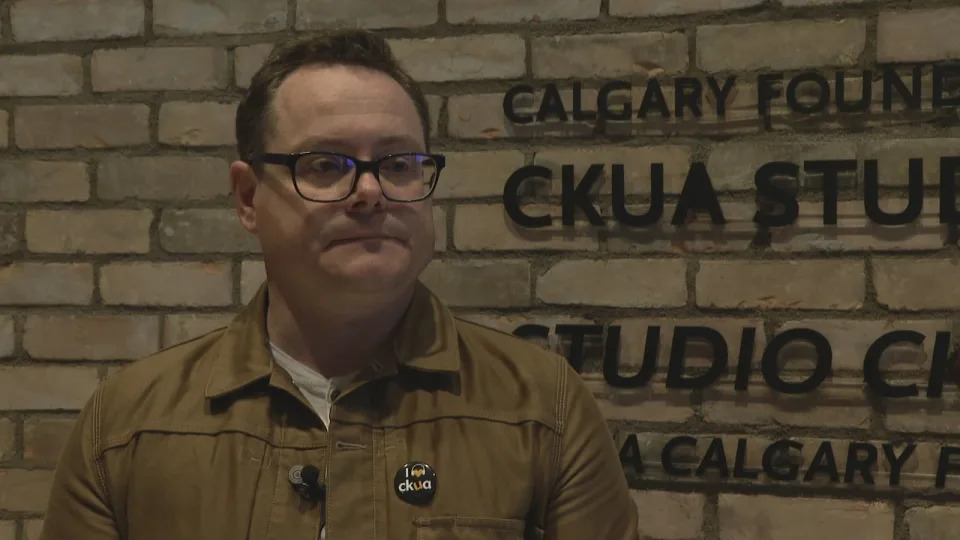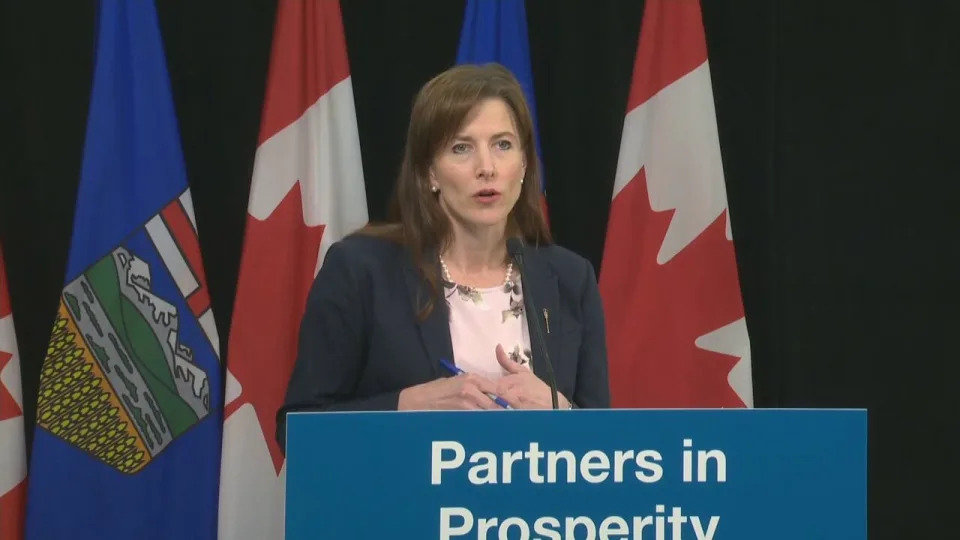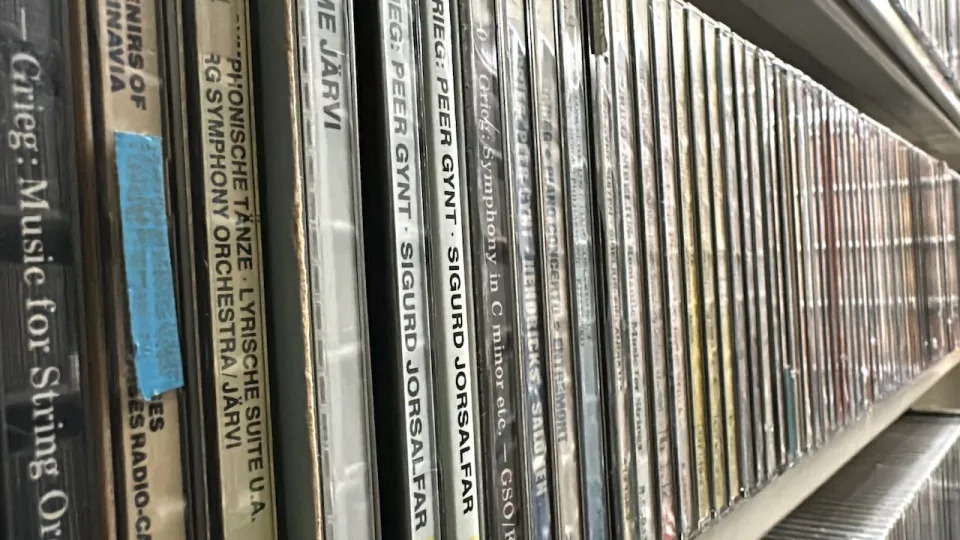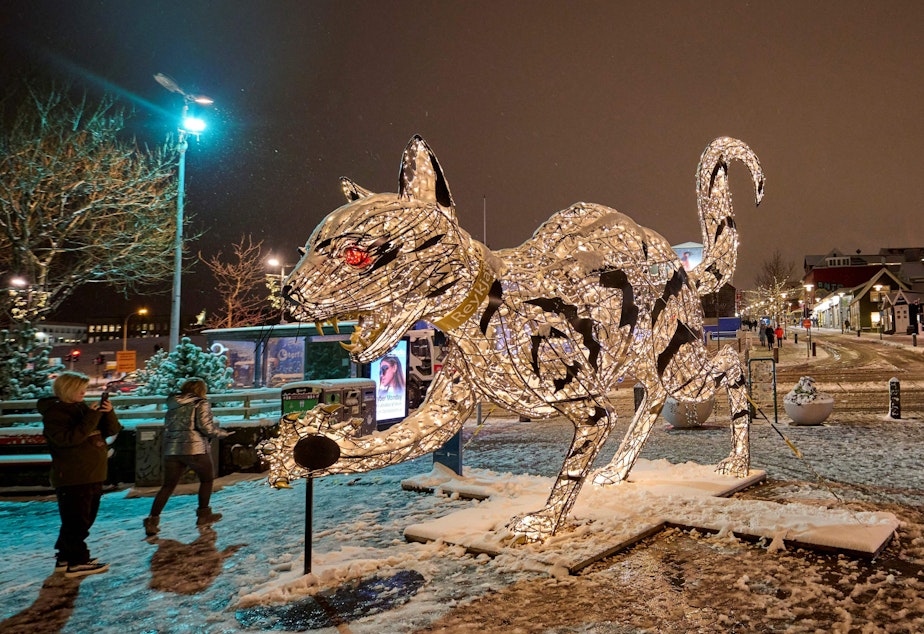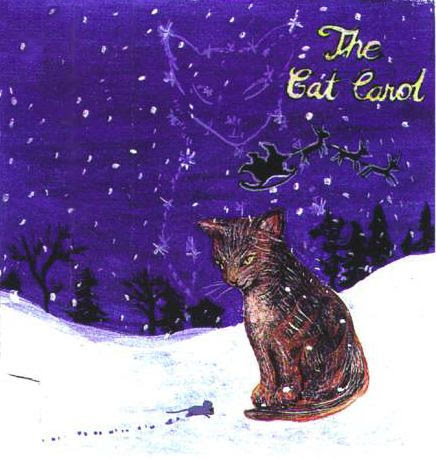CKUA History of a privatization putsch
"It began in 1927 with a dream: to take the University to the people via the new medium of radio. With a couple of the University of Alberta’s engineering students, 2 windmill towers, some old iron poles and a little creative book-keeping, a $700 grant was transformed into Canada’s first public broadcaster. The CKUA Radio Network signed on November 21st, 1927, with a 500-watt signal.
On May 23rd, 1929, the 1st Canadian school broadcast was made from CKUA, fulfilling the original goal set 2 years prior, and starting a tradition of excellence in distance education that continues today through CKUA’s relationship with Athabasca University. "CKUA History
"On September 29, 1941, CKUA increased power to 1,000 watts from a new transmitter site. In September 1944, a radio program committee of the university took over responsibility for CKUA from the Department of Extension. Alberta Government Telephones began operating CKUA on May 1, 1945, with the university still programming the station for three hours a day, Monday through Friday. The university still holds the station's license. On July 28, 1945, CKUA moved from the university campus to the Provincial Government Building in downtown Edmonton. A 1947 listing shows CKUA operating on 580 kHz with 1,000 watts. The station is a CBC Trans-Canada affiliate and is non-commercial. Listed start date is November 1, 1927. CKUA is operated by Alberta Government Telephones. Studios are on the top floor of the Provincial Building, transmitter: R. R. 1 Calgary Trail, south of Edmonton. CKUA is on the air from 7 a.m. to 12 a.m. weekdays, 10 a.m. to 11 p.m. Sundays.
Alberta Government Telephones started CKUA-FM on 98.1 MHz with 250 watts on June 28, 1948. The "UA" in the call letters: University of Alberta. In 1954, CKUA-FM's power is listed at 352 watts.
On March 9, 1960, CKUA increased power to 10,000 watts-U DA-2, using three 282 foot towers at 53-20-34 113-27-27. The original CKUA antenna on the university campus was dismantled in 1966.
On April 1, 1974, The Government of Alberta transferred operation of CKUA from the University of Alberta to The Alberta Educational Communications Authority (ACCESS), a Crown Corporation. (Access was established in October 1973).
A 1976 engineering brief proposes CKUA operate with 50,000 watts full-time.
THE PRIVATIZATION PUTSCH
In 1995, the CRTC approved the purchase of the radio division of the Alberta Educational Communications Corp. (CKUA-AM, CKUA-FM and its 15 rebroadcasters) by CKUA Radio Foundation for ten dollars. The foundation will receive provincial grants for three years and can sell up to 504 minutes of restricted advertising per week. CKUA becomes an independent foundation. ACCESS-TV was purchased by CHUM Limited.
At midnight, March 22, 1997, CKUA left the air due to financial troubles. On April 25, 1997, CKUA began broadcasting once again."
From the The Bill Dulmage Radio & Television Archive
CKUA—An exercise in education
By Geoff McMaster
"On March 20, 1997, CKUA went off the air; it seemed then for good. Not even the station's announcers knew what was coming until that afternoon. Gathered at the home of announcer Lee Onisko to commiserate, they phoned in suggestions for the final program of the night, which finished appropriately with The Band's The Last Waltz.
At midnight, without explanation to the listening audience, host Chris Martin closed with, "We'll be back, after this," and one of Alberta's most valued cultural institutions was reduced to silence, at least temporarily.
But what Walters discovered in writing her comprehensive account of the station since its humble beginnings at the University of Alberta was there were any number of times when CKUA could have disappeared from the airwaves were it not for the fighting spirit of its supporters. It's just that the drive to bring the radio station back in 1997 threw into stark relief the passion Albertans have for the station. They weren't about to let something so valuable disappear because of financial bungling by an incompetent board of governors.
As host announcer Dave Ward said of the Touch the Transmitter fundraising tour of the province: "This isn't a radio station; this is a religion. The way people reacted to what happened was more like what they would do if a church burned down."
CKUA Uses the Internet during its Crisis
On The Web By Richard Cairney
"The public broadcaster's website is a newborn - it was launched after the station was pulled off the airwaves in late March.
While the station was off the air, the Internet was employed as a tool to fight for CKUA's revival (that site was built for the Save Alberta Public Radio Society, linked to the CKUA site). Strategies were hatched, beefs were aired and fund raising conducted.
Now that the station is back on the air, it's using the Internet as a newsstand and a new medium, offering surfers around the world broadcasts in RealAudio."
NEWS FRONT
By Richard Cairney
SEE Magazine Copyright © 1997. All Rights Reserved.
Much has happened in the two weeks since the CKUA Radio Foundation closed the station and laid off 50 employees, but a revival still appears to be a distant hope. Former staffers continue to call for the resignation of foundation board chair and station chief executive officer Gail Hinchliffe, who vehemently refuses to step down.
"I'm not going anywhere," Hinchliffe said from her Calgary home Tuesday.
Hinchliffe said she and other board members have been "lightning rods" in a storm of controversy that erupted March 21 when, citing imminent bankruptcy, they shut down the station without notice.
Angry listeners and supporters, along with bitter ex-employees, called for an independent financial audit of the station's books - a request that has been granted. Premier Ralph Klein has asked auditor general Peter Valentine to audit the foundation's books to ensure the board has lived up to terms of a 1994 agreement. Under that deal, the province handed over $4.7 million and the station - with $800,000 in assets - to an appointed board. The funding was to ease the transition from Crown corporation to non-profit public broadcaster.
Hinchliffe was to meet with municipal affairs minister Iris Evans Wednesday and Evans was scheduled to meet with former CKUA staffers Thursday. Staffers hope Evans can convince Hinchliffe to step aside.
The former employees are suspicious of Hinchliffe's dual roles as board chair and CEO, wary of the fact that board member Larry Clausen's Calgary company, Communications Inc., handled the station's marketing contract and are upset by Revenue Canada documents showing three of the station's top executives shared some $201,000 in earnings in 1995. They want an elected board to take over the station. And they want Hinchliffe out of the picture completely.
But she refuses to go.
"This isn't the Media Club, it is a highly regulated industry," Hinchliffe told SEE. "You can't sit around the rumpus room and decide who is and isn't going to be on the board."
Hinchliffe said the foundation has secured long-term financial commitments to get the station up and running but wouldn't say who is providing financial support.
Musician Tommy Banks is skeptical of the claim. He and Folk Festival producer Terry Wickham are part of a group that tried last week to broker a deal. Banks said talks are ongoing. The group wants to see the current board dissolve and an interim board take over. That board would get the station up and running and set new bylaws governing board membership to allow broad-based representation.
And, he added, Hinchliffe would be a valuable member of the interim group.
"It would be a terrible mistake for the interim board not to include Gail Hinchliffe. She knows where the ketchup is," Banks explained.
A new board without current members - particularly someone with Hinchliffe's knowledge of the station, "would be like a bunch of people walking into a completely dark room that has a hot stove in the middle of it. You need someone to say 'hey, be careful, there's a hot stove over there.'"
Broadcaster David Ward said he's surprised Hinchliffe hasn't stepped down to make way for an interim board.
"She hasn't cracked and I am, in a warped way, impressed," he said.
Katherine Hoy, spokesperson for former staffers and the Save Alberta Public Radio Society, said it would be difficult for ex-employees to participate in any venture Hinchliffe is involved in.
"She has got to step down as CEO and chair. She could be on the interim board," Hoy conceded. "But she would be there just to tell them where the ketchup is."
There seems to be no love lost between the CEO and her former employees. Although Hinchliffe admitted she made a mistake last week by publicly considering the use of volunteer deejays, she said current on-air personalities are valuable but not indispensable.
Having former staffers return if the station goes back on air "would certainly be the ideal," Hinchliffe said.
"But on the other hand, CKUA has been broadcasting for 70 years and not with the same people."
That may be true but the public appears to be siding with CKUA staffers. Rallies across the province - in Edmonton, Calgary, Red Deer, Medicine Hat and Lethbridge - have raised more than $15,000 in donations for the Save Alberta Public Radio Society. In all, the society has raised pledges for more than $90,000 in donations. Money will be used to battle for control of the station.
Hinchliffe feels the support is probably too little, too late. When CKUA first left the government nest it was treated poorly by the communities it served, she said. Arts groups resented the station, fearing it would compete for much-needed corporate sponsorships, and listeners were complacent in supporting the station financially.
"I wish there was that level of enthusiasm and willingness to support us before," she said, of the donations made to former staffers.
The society's campaign is the only public work being done to save the station and it is the station, not only personalities, that donors are supporting, she said. She pointed out that the $8,500 raised at the farmers' market in Old Strathcona Saturday afternoon wouldn't cover more than one day's costs to keep the station running.
"I don't see this as support for one camp or another."
Former CKUA staffers see it as support for broadcasters and the station itself; the two are inextricably linked. And the employees feel they owe it to listeners and to themselves to keep fighting to get the station back on the air.
Strong emotional support shown during rallies is overwhelming, said deejay Bill Coull.
"People really hurt. I have had people weeping in my arms, literally and figuratively," he said.
Coull noted staffers are running into financial concerns and admits "there will be attrition."
But most staffers are "absolutely resolute" and will keep working to rally support to return quality programming to the airwaves.
"This is a very strong personal thing," Coull said.
"You hit a person in their soul when you take away their job but you take away their heart and soul when you take away a CKUA job."
CKUA goes back on the air with a referendum for listeners
FFWD Weekly Copyright © 1997. All Rights Reserved.
"After being pulled off the air more than a month ago, CKUA Radio will be back on Friday, April 25 at 6 p.m.
Staff from the station, which was closed by its former board to prevent bankruptcy, will return to their jobs on a volunteer basis for one month. The employees are members of the International Brotherhood of Electrical Workers' local 348.
A volunteer interim board took over the CKUA Radio Foundation last week, firing former board chair and station CEO Gail Hinchliffe. The board is working to revive corporate sponsorships and is aiming to run the station on an annual budget of $1.4 million, compared to a $2.8-million budget prior to the station's closure on March 21.
Edmonton lawyer Bud Steen, chairman of the new board, says the station has approximately $100,000 in the bank and a provincewide fund-raising campaign will begin May 2. Referring to the campaign as "a referendum," Steen says the new board is operating on a plan in which two-thirds of the funding will come from listeners."
Conflict of Interest Alleged In CKUA Affair
September 22, 1997The preliminary findings of a forensic audit into the business dealings of Edmonton's taxpayer-owned radio network CKUA have resulted in allegations of conflict of interest, breach of duty and controversial business decisions. The report recommends that the provincial government and the CKUA Radio Foundation, which took over the station, sue the former directors for breach of fiduciary responsibilities.
However, Iris Evans, the minister responsible for CKUA, says the province will not launch a civil suit, is not planning to give the station more money, and is not requesting a criminal investigation. It has, however, asked investigators Deloitte & Touche to send a letter to the federal superintendent of bankruptcy regarding a possible contravention of the Bankruptcy and Insolvency Act by Gail Hinchliffe, the political appointee who ran the station between August, 1994 and April, 1997.
Alberta Auditor General Report on the Failure of CKUA Privatization
In August 1994, ACCESS transferred the assets and operations of CKUA Radio to a privately operated foundation called the CKUA Radio Foundation (the Foundation). The transfer was pursuant to an Asset Purchase and Sale Agreement (Sale Agreement) between ACCESS and the Foundation. The Sale Agreement provided for the Foundation to receive grants totaling $4.725 million over a three-year period to be used in accordance with an approved business plan (Business Plan) to transform CKUA Radio into a financially self-sustaining public broadcaster.
In March 1997, however, CKUA Radio ceased broadcasting, citing financial difficulties. In the same month, the Minister of Municipal Affairs asked the Auditor General to investigate and report on the financial affairs and other matters related to the difficulties experienced by the Foundation. As I am not the auditor of the Foundation, the investigation was performed under authority contained in the Sale Agreement.
In simple terms, CKUA Radio ceased broadcasting in March 1997 because it was running out of money. The Foundation’s revenues had been consistently less than expected, and its expenditures were higher than budgeted for in the Business Plan. What is more revealing, however, is how this happened and why ACCESS and the Department of Municipal Affairs were largely unaware of the Foundation’s difficulties until they became critical.
The Business Plan, which was part of the Sale Agreement, provided a strategy by which the Foundation was supposed to progress from an operation dependent on government funding, to a financially viable self-sustaining operation. It contained budgets for revenues and expenditures, supported by plans containing operational objectives and strategies, a management structure and staffing complements. It is unclear, however, whether the revenue targets contained in the Business Plan were realistic. As events transpired, actual revenues fell far short of those targets. Unfortunately, the Foundation’s efforts to address these revenue shortfalls were largely unsuccessful, and eventually, its resources were so depleted that cessation of operations was inevitable.
ACCESS, and later the Department of Municipal Affairs (which assumed ACCESS’s rights and obligations under the Sale Agreement when ACCESS was wound-up in July 1996), did little to help the situation. In part, this was probably because both lacked in-depth knowledge of the Foundation’s situation. This, in turn, was because the accountability information obtained from the Foundation since August 1994 had been minimal.
Even if ACCESS or the Department had pressed the Foundation for financial and other operating information, it is doubtful if it could have been provided. This was because the Foundation’s financial records were generally poor and not conducive to the provision of timely financial information. This meant that much of the information the Foundation’s Board and management would have needed to manage the Foundation’s affairs effectively, was usually unavailable or late. The audited financial statements for the first thirteen months to August 31, 1995 were not presented to the Board until February 18, 1997. Monthly operating statements were not produced until June 1996, and even then, were of limited value because financial budgets were not integrated into an overall operational plan.
In conclusion, I believe that failure to measure and report results promptly, to match results against a comprehensive plan, and to take corrective action when needed, severely limited the Foundation’s ability to administer its affairs successfully. I believe also that some of the Foundation’s problems could have been avoided, or at least mitigated, by a proper governance structure with appropriate separation of duties between the Board and management. My advice to the Foundation’s new Board of Directors is to develop realistic revenue targets for the future, and to determine whether CKUA Radio can operate within the necessary cost constraints.
The failure of the Foundation to plan properly and to provide evidence of results had implications for ACCESS, which provided $4.725 million in cash and $1.125 million in capital assets to the Foundation. In such circumstances, even though the Sale Agreement was virtually silent on the need to provide accountability information, ACCESS (and later the Department) should have required the Foundation to provide frequent accountability reports. As a minimum, such reports should have contained the information needed to enable ACCESS to monitor the Foundation’s progress towards the goals set out in the Business Plan.
I acknowledge that, as required by an April 1995 amendment to the Sale Agreement, the Foundation sent ACCESS a report in October 1995 on the status and viability of the Foundation’s operations. The report, however, was superficial and unsupported. Furthermore, the report was received by ACCESS six months after it had paid the Foundation the final $2.025 million of grant monies to cover the second and third years of the funding period. In my view, the failure of ACCESS to require the Foundation to be properly accountable for the ongoing performance of the goals and objectives contained in the Business Plan allowed a bad situation to become critical, and Provincial funding to be wasted.
Another situation that may also have contributed to a lack of adequate accountability was the Foundation’s inappropriate governance structure. There was no clear separation of responsibilities between the Foundation’s Board and management, even though such separation was required by the Business Plan. Further, at times during the period from February 1994 to April 1997, some directors of the Foundation were also directors of ACCESS. In my view, this dual role created conflicts of interest during their involvement in decisions relating to the sale and subsequent operation of CKUA Radio.

